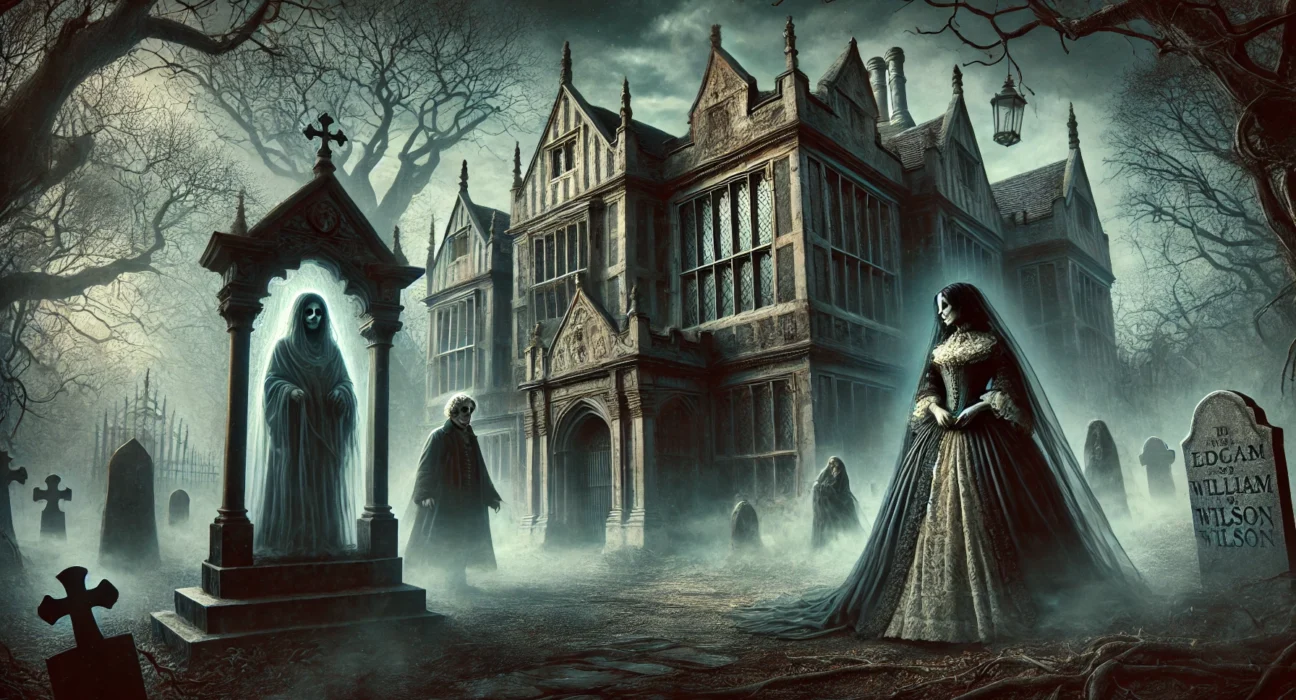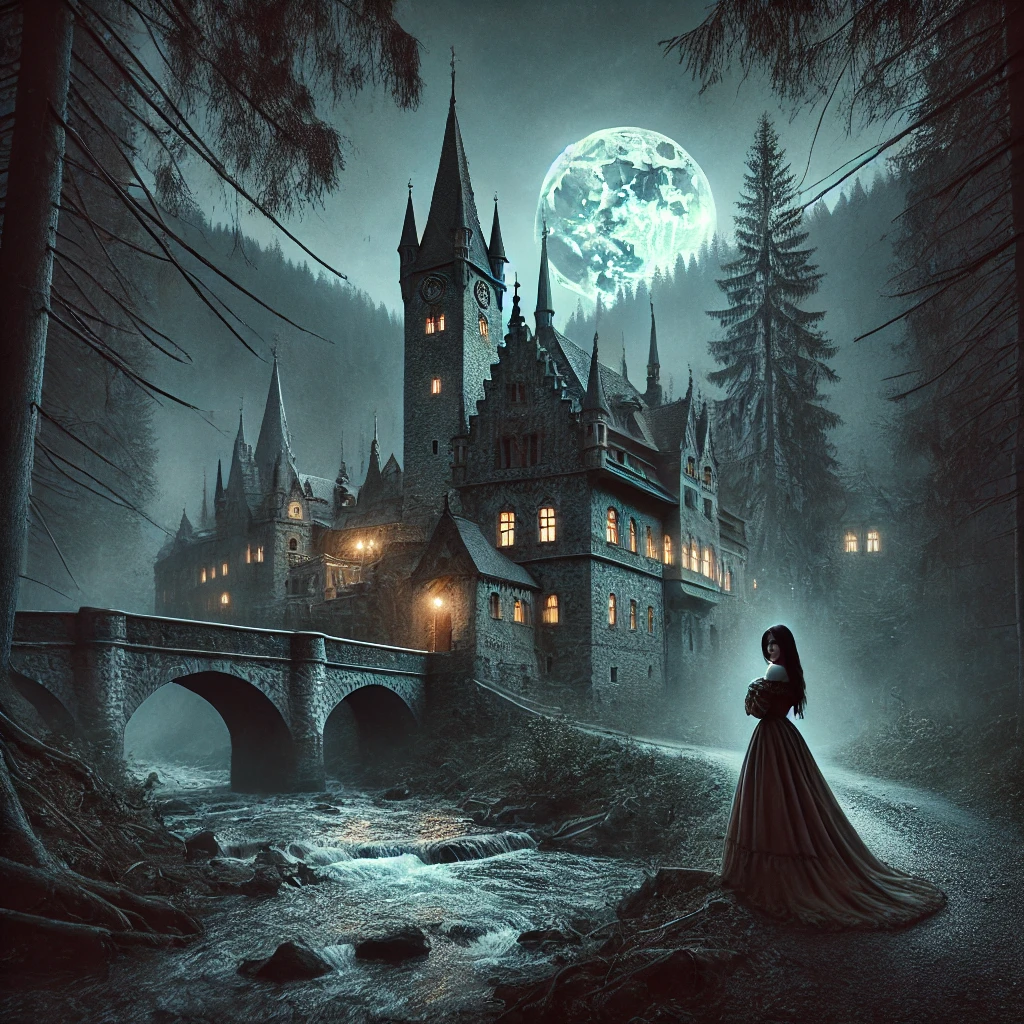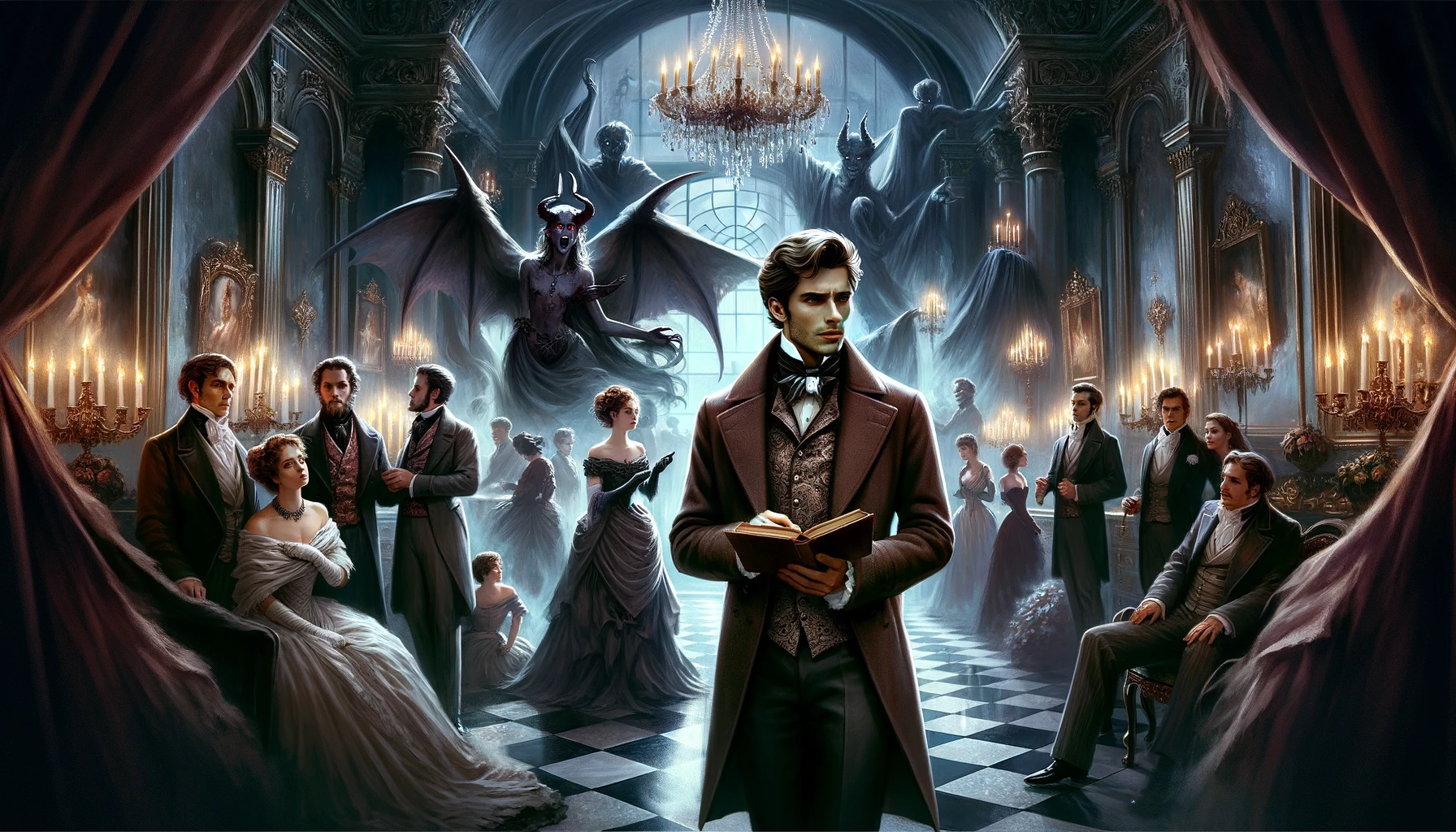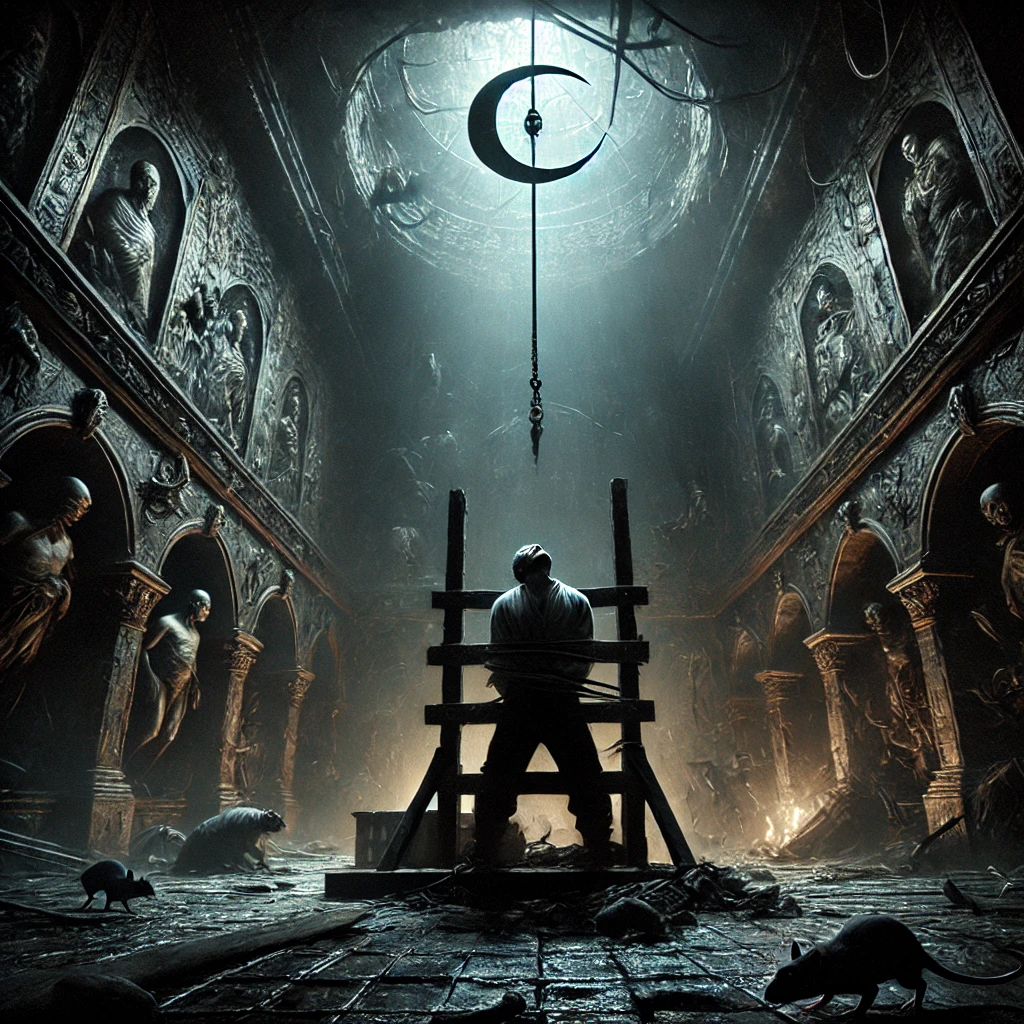“Tales of the Grotesque and Arabesque” by Edgar Allan Poe is a collection of short stories that delve into the macabre and mysterious. Published in 1840, these stories showcase Poe’s masterful ability to create an atmosphere of horror and suspense, reflecting the author’s deep fascination with the darker aspects of human nature and the supernatural. This collection includes some of Poe’s most famous works, offering readers a glimpse into the mind of one of America’s greatest literary figures.
Plot Summary
Morella
With a feeling of deep yet most singular affection, the narrator regards his friend Morella, whom fate had bound him to at the altar. Thrown together many years ago, their souls intertwined in a union devoid of passion or love. Morella’s profound erudition and talents of no common order quickly made her his intellectual guide. She introduced him to mystical writings, particularly those of early German literature, which became their constant study. As time passed, the narrator found himself drawn into the labyrinth of her thoughts, surrendering his own reason to her influence.
Morella’s presence, however, became increasingly oppressive. Her touch, once comforting, grew chilling; her voice, once melodious, now carried a note of terror. The joy he initially found in their companionship turned to horror as he lingered by her side, haunted by the shadows of her teachings. Her health waned, and with it, her spirit clung more tenaciously to her mortal coil. One autumnal evening, with a mist over the earth and a rainbow among the rich October leaves, Morella called him to her bedside. She spoke of her impending death and the life she would leave behind within their unborn child.
In her final moments, she prophesied that the child would bear her essence. Morella passed away, and their daughter, born as her mother breathed her last, grew to be a perfect resemblance of the departed. The narrator’s love for his daughter was intense, but it was soon overshadowed by the horror of her uncanny likeness to Morella. Her rapid growth in stature and intellect, her adult-like faculties and wisdom, filled him with dread. The child, unnamed for years, received the name Morella at the baptismal font, a name that summoned her death as she responded, “I am here!” The narrator, in a final act of horror, discovered no trace of the first Morella in the tomb where he laid the second.
Lionizing
Robert Jones begins his life with an unusual distinction—an obsession with noses. His first act as a child was to grab his nose with both hands, an action his mother took as a sign of genius. Encouraged by his father, Robert delves into the study of noses, mastering nosology before he is out of childhood. His passion for noses becomes his life’s guiding principle, leading him to social prominence and scholarly acclaim.
As Robert grows, his dedication to nosology earns him accolades from various prestigious journals. He moves through society with his nose held high, quite literally and figuratively. His self-importance knows no bounds, and he revels in the adoration of the elite. One day, during a social gathering, his nose becomes the centerpiece of attention. The Duchess of Bless-my-Soul and other high society figures marvel at it, leading to an absurd duel where Robert shoots off his opponent’s nose.
The incident brings about a turning point in Robert’s life. His father, recognizing the absurdity of his son’s obsession, advises him to abandon his focus on nosology. Despite his father’s advice, Robert’s life spirals into a series of farcical events, ultimately becoming a cautionary tale about the perils of excessive pride and singular obsession.
William Wilson
Adopting the pseudonym William Wilson, the narrator recounts a life overshadowed by his doppelgänger. From his earliest memories at a strict school, he recalls meeting another boy who shared his name and appearance. This double, though quieter and more reserved, seemed to mirror and mock his every action. Despite Wilson’s attempts to assert his superiority, his double remained a constant, unnerving presence.
As they grew older, Wilson’s double followed him to various schools, always interfering with his increasingly immoral behavior. The double’s presence embodied Wilson’s conscience, thwarting his every vice. Their final confrontation occurs in Rome, where Wilson, in a fit of rage, stabs his double, only to see his own reflection dying in a mirror. This revelation leaves Wilson to face the realization that he has destroyed a part of himself, his moral compass, leaving his soul corrupted and alone.
Wilson’s descent into vice begins at a large, rambling Elizabethan house, his first school. There, his rebellious nature flourishes, unchecked by weak-minded parents and ineffectual teachers. Among his schoolmates, only his namesake dares to challenge him. This boy, identical in name and appearance, competes with Wilson in every aspect, from academics to athletics. Despite public bravado, Wilson secretly fears and respects his double, recognizing in him a true equal, if not a superior.
Their rivalry intensifies as they move to Eton and later Oxford. Wilson’s double continues to shadow him, interfering with his debauchery and gambling. At Oxford, Wilson becomes notorious for his profligacy and skill in cheating at cards. His downfall begins when he targets a young nobleman, Glendinning, for financial ruin. Wilson’s carefully laid plans unravel when, during a high-stakes game of écarté, a mysterious stranger reveals his cheating. The stranger, a cloaked figure with a familiar voice, exposes Wilson’s deceit to the assembled guests.
In a moment of clarity, Wilson recognizes the stranger as his double. The revelation that his doppelgänger has again thwarted his immoral plans drives Wilson to a frenzied state. He confronts and kills his double, only to realize that he has destroyed the last remnant of his own conscience. As his double dies, Wilson sees his own reflection, signifying the complete loss of his moral self.
In the aftermath, Wilson is left to confront the horror of his actions and the void where his conscience once existed. His life, once filled with the promise of greatness, is now a desolate landscape of guilt and despair. The tale of William Wilson serves as a haunting exploration of identity, morality, and the eternal struggle between one’s darker impulses and the innate sense of right and wrong.
Main Characters
- Morella: A highly intelligent and mystical woman, Morella’s profound knowledge and philosophical insights captivate and eventually terrify her husband. Her death and the subsequent birth of her identical daughter embody the story’s themes of identity and the supernatural.
- Robert Jones: The protagonist of “Lionizing,” Robert is a man whose obsession with noses leads him to social acclaim and eventual downfall. His character serves as a vehicle for Poe’s satire on intellectual pretentiousness and the dangers of excessive pride.
- William Wilson: The narrator of “William Wilson,” he is a man plagued by his double, who represents his conscience and moral struggle. His descent into moral decay and his ultimate confrontation with his doppelgänger illustrate the themes of identity and inner conflict.
Theme
Identity and the Doppelgänger: Many of Poe’s stories explore the theme of duality and the struggle with one’s own identity. “William Wilson” is a prime example, where the protagonist’s double serves as a physical manifestation of his conscience.
The Supernatural and the Uncanny: Poe often blurs the line between reality and the supernatural, creating a sense of unease and terror. “Morella” and “William Wilson” both feature elements of the supernatural that challenge the characters’ understanding of reality.
Obsession and Madness: Characters in Poe’s stories frequently succumb to obsession, leading to madness and destruction. In “Lionizing,” Robert’s fixation on noses becomes his undoing, while in “Morella,” the narrator’s growing horror at his daughter’s resemblance to his wife drives him to despair.
Moral Decay and Conscience: Poe’s characters often grapple with their moral failings and the consequences of their actions. “William Wilson” depicts the internal battle between the protagonist’s desires and his conscience, ultimately leading to his downfall.
Writing Style and Tone
Edgar Allan Poe’s writing style is characterized by its elaborate and gothic prose, rich with detailed descriptions and a dark, foreboding tone. His use of first-person narration allows readers to delve deeply into the psychological states of his characters, creating a sense of intimacy and immediacy. Poe’s stories often feature a meticulous buildup of suspense and a focus on the macabre and the mysterious.
Poe employs a range of narrative techniques, including unreliable narrators, intricate symbolism, and thematic repetition, to enhance the sense of unease and horror. His language is often ornate and poetic, reflecting his background as a poet and his affinity for exploring the depths of human emotion and the darker aspects of the human psyche. Through these stylistic choices, Poe crafts stories that are both intellectually engaging and deeply unsettling, leaving a lasting impact on his readers.
We hope this summary has sparked your interest and would appreciate you following Celsius 233 on social media:
There’s a treasure trove of other fascinating book summaries waiting for you. Check out our collection of stories that inspire, thrill, and provoke thought, just like this one by checking out the Book Shelf or the Library
Remember, while our summaries capture the essence, they can never replace the full experience of reading the book. If this summary intrigued you, consider diving into the complete story – buy the book and immerse yourself in the author’s original work.
If you want to request a book summary, click here.
When Saurabh is not working/watching football/reading books/traveling, you can reach him via Twitter/X, LinkedIn, or Threads
Restart reading!








